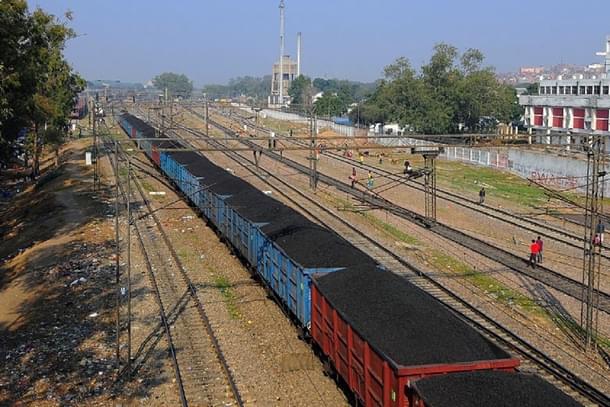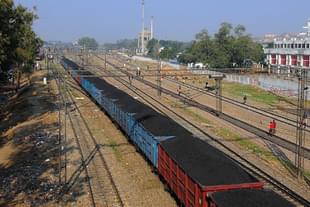Infrastructure
Ministry Of Coal Starts Initiative To Promote Rail-Sea-Rail Transportation For Efficient Movement Of Domestic Coal
Arun Kumar Das
Aug 24, 2023, 10:18 AM | Updated 10:18 AM IST
Save & read from anywhere!
Bookmark stories for easy access on any device or the Swarajya app.


The Union Ministry of Coal has taken an initiative to integrate rail-sea-rail (RSR) transportation for the efficient movement of domestic coal.
This multi-modal transportation system allows for the seamless transportation of coal from mines to ports and then to end-users, reducing transportation costs and improving logistic efficiency.
In the financial year (FY) 2023, the major coal-producing states such as Odisha, Chhattisgarh, Jharkhand, along with parts of Madhya Pradesh, accounted for approximately 75 per cent of the total domestic raw coal dispatch.
In order to meet the growing demand, a well-planned and efficient coal evacuation system is required.
Therefore, Ministry of Coal has constituted an inter-ministerial committee (IMC) headed by a senior ministry official, consisting of Ministry of Power, Ministry of Railways and Ministry of Ports, Shipping, and Waterways with the aim of preparing a long-term plan for coal movement in the country.
Currently, the Indian Railways account for about 55 per cent of coal evacuation, with a target to increase this share to 75 per cent by FY’30.
The Ministry of Coal is emphasising the need to augment coal evacuation and enhancing alternative routes of evacuation to avoid congestion, such as the RSR mode by FY’30.
The committee has recommended several measures to promote RSR evacuation of coal to reach 112 MT by 2030, from the existing 40 MT. This strategy offers multi-faceted benefits.
Firstly, it is likely to reduce congestion on the all-rail route (ARR) by providing an additional alternative mode of coal evacuation.
Secondly, it creates export opportunities by building infrastructure that can be utilised for exports in the future and lastly, RSR has significantly lower carbon footprint compared to ARR.
The coastal shipping mode of transportation, which is an economical and eco-friendly system for moving goods, has the potential to revolutionise India's logistics industry.
The ongoing efforts to augment coal evacuation such as RSR, strives to achieve full capacity utilisation of the ports along the Southern and Western coasts. This will enable efficient transportation of more coal to power houses in Gujarat, Maharashtra, Karnataka, Goa, Tamil Nadu, Kerala, and Andhra Pradesh.
Initiatives are underway to optimise the costs of delivering coal through RSR. Opting for rail-sea-rail could potentially save around Rs 760-Rs 1,300 per ton in logistics costs for end users located in Southern India.
Presently, for supply of coal from MCL (Paradip) to western/northern thermal power plants, the total cost increases by around Rs 2,500/ton over ARR, but it is still cheaper than the total landed cost of imported coal.
The Ministry of Coal's efforts to promote RSR are yielding good results as it has shown significant growth of around 125 per cent over the past four years.
With coal production in India expected to nearly double in the next seven years, the RSR as an alternative mode of transportation, becomes crucial for efficient coal evacuation to consumption centres in India, ensuring a seamless and uninterrupted power supply.
The IMC recommendations are the part of the “whole of government” approach to address the challenges of efficient evacuation of coal to the destinations by all the Ministries.
The Ministry of Coal is taking all necessary steps to further enhance the RSR coal evacuation strategy to consistently meet the nation's growing energy demands ensuring a resilient and efficient energy supply system.




